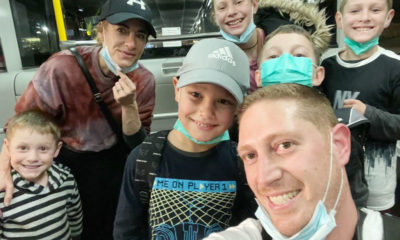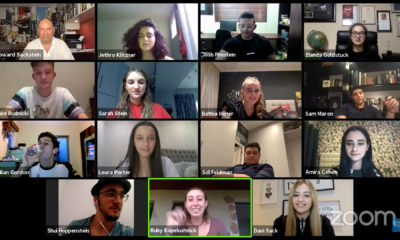
Featured Item

Remote learning teaches us importance of connection
Herzlia High School Principal Marc Falconer spoke to his matric teachers to find out how they weathered the 2020 year. This is what he gleaned:
As we celebrate the topsy-turvy madness of Purim, there seems to be some kind of resonance between the world of the Persian King Ahasuerus, the genocidal Haman, the disasters threatening the Jewish people thousands of years ago, and our own COVID-19 decimated world.
It’s a parallel Tanya White makes in a recent article in the Times of Israel.
Teaching in the time of COVID-19, while it may sound melodramatic, did in fact call for looking into the abyss of chaos and reimagining education and all its components: engagement, stimulation, responsiveness, assessment, and human connection.
At some point during the nearly one year of online or blended learning of Google Meets or Zoom or Microsoft Teams (or whatever platform was chosen), we all tried to see beyond a screen of silent icons and no amount of threatening, cajoling, begging, or bribing seemed effective in getting kids to emerge from behind their chosen symbols into the dazzling light of virtual connection. We all had to penetrate layers upon layers of digital obfuscation.
I hope I’m not alone in admitting to saying possibly scandalously provocative nonsense in the hope of evoking some outraged response. Any response actually. This seldom happened, the screen remained a constellation of shimmering icons with the little red microphones resolutely and unwaveringly muted. There were times when it seemed like insanity, and we were all teaching to ourselves in a dark and empty cave.
There were advantages though. Dressed appropriately from the waist up, the southern slopes could be cosy in a blanket and furry slippers in the winter, or draped in a cotton sarong and flip flops during the warmer months.
There were also dark rumours of some teachers in the later afternoon classes fortifying their coffee with something a little more bracing. These stories are, however, almost certainly monstrous losh.
What can be said with absolute certainty is that no recorded lesson or YouTube video of longer than 12 minutes stood any chance of being watched in its entirety.
And as for formal testing, we all, happily, had to find other – and better – ways of determining how effective learning and teaching was.
I know I’m not the first person to make the point, it’s a realisation that resonates for almost any teacher: teaching is very much less about content or information and very much more about relationships and human connection.
And even though our faces are smothered in masks at the moment, we’re all celebrating the opportunity to connect once again in our schools – places of learning, but also where learning communities are.










